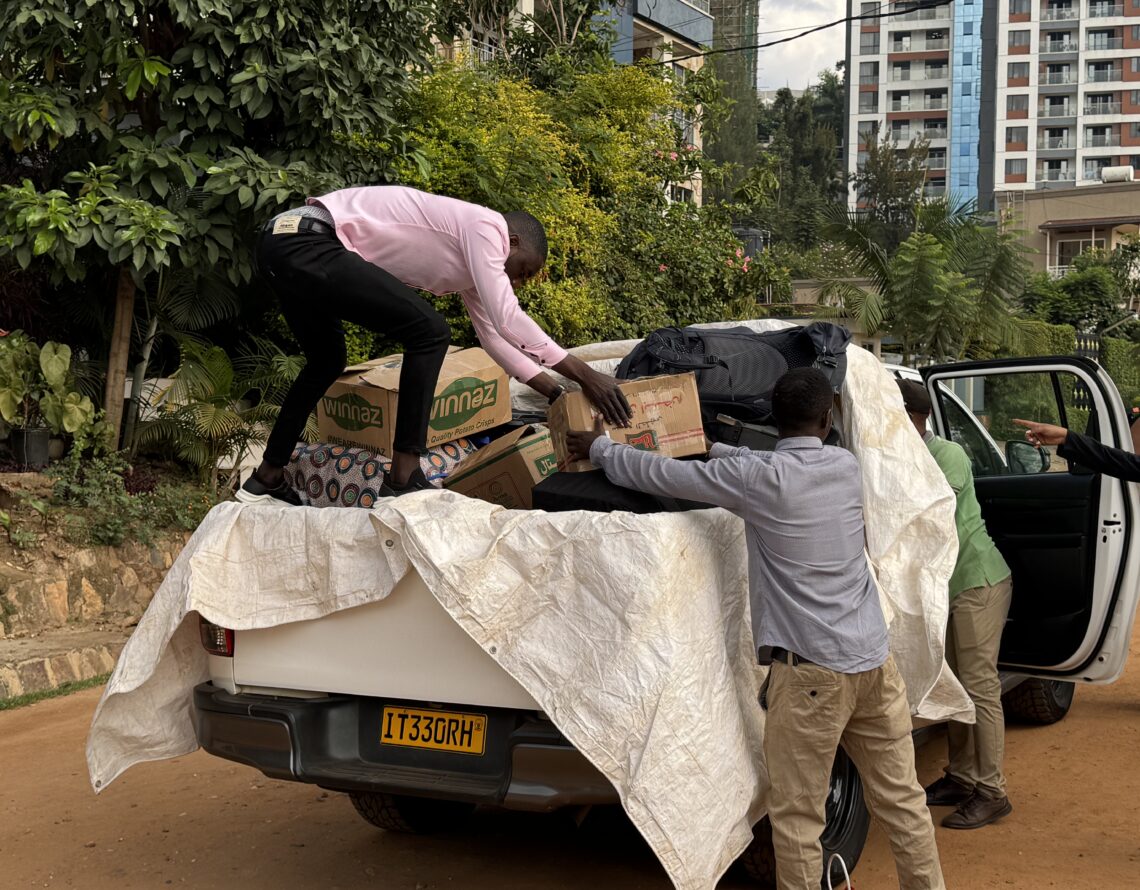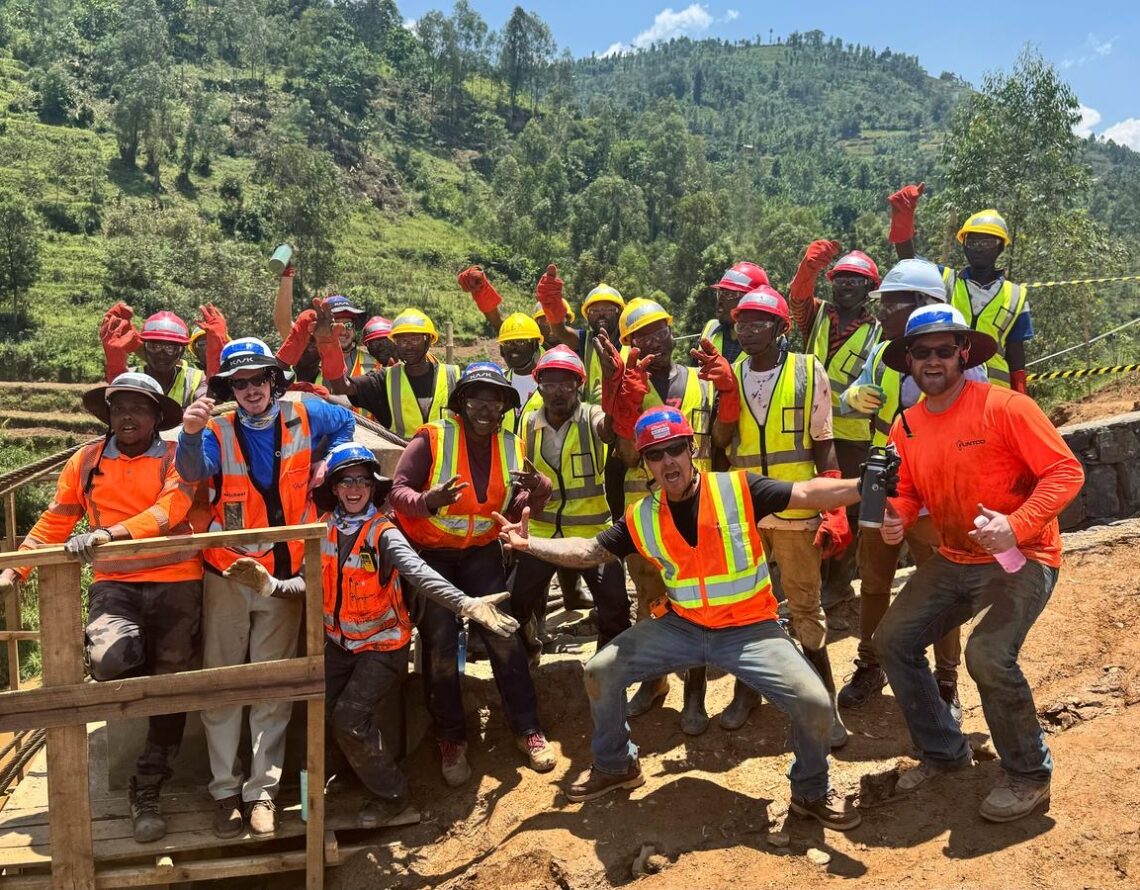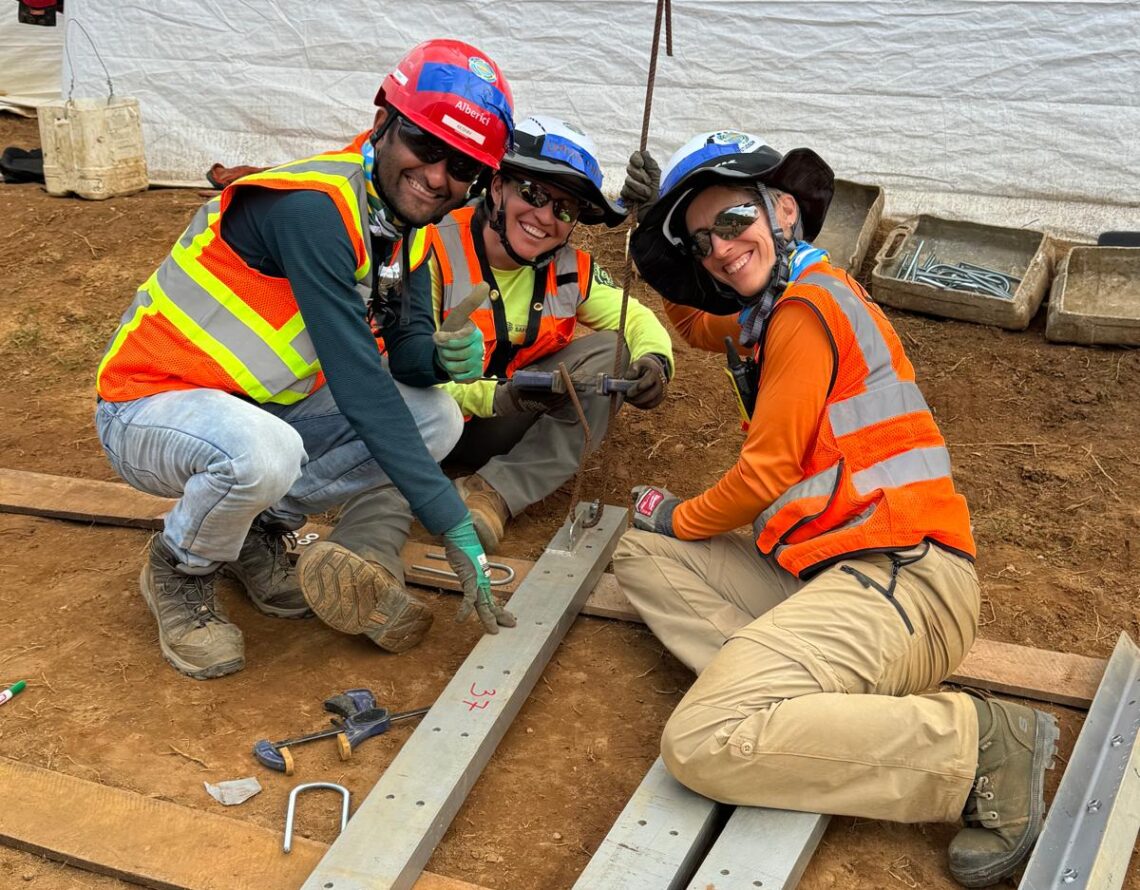
A bridge is something most of us take for granted, but nearly 1 billion people around the world don’t have safe access to critical resources. Bridges to Prosperity (B2P) constructs pedestrian bridges in rural communities around the world. Their mission is to safely connect people with healthcare, education, and economic opportunities by building bridges that connect communities.
Our Current Bridge Building Mission | Bizenga Trail Bridge
In the heart of Rwanda’s Nyamasheke District, the Karundura River has long divided communities, creating a barrier between people and opportunity. The proposed Bizenga Trail Bridge, a 93-meter hybrid suspension bridge, will soon change this reality for over 2,900 residents across Bizenga, Kagarama, Gakomeye, and Gatare communities.
The Karundura River has been synonymous with missed opportunities and dangerous crossings for generations. During the rainy season, its swollen waters become a formidable obstacle, forcing impossible choices upon locals. Parents keep their children home from school, disrupting their education. Families lose access to essential healthcare at the local health center. Businesses suffer as market access becomes impossible. Communities remain isolated until flood waters recede.
In February 2025, team members from Alberici and Flintco will embark on a two-week journey to construct this life-changing bridge alongside local members of the region, ensuring that no resident must choose between their safety and their livelihood.
Stay updated with photos, stories, and progress updates from Michelle Koca as we build a bridge that will provide safer access to essential resources. Don’t miss a moment of this transformative journey!
2025 Bizenga Trail Bridge Journey

Arrival
They finally made it! Our 10 Alberici and Flintco teammates have arrived in Rwanda after an adventurous 48+ hours of travel, including flight delays, detours, and a wild ride through Uganda. After a well-deserved meal in Kigali, the team is ready to get to work!

Day 1
Travel day
After loading up (trucks packed high with gear and groceries), we hit the road—music on, excitement high! Stops at the local market, stunning views of Lake Kivu, and seeing a bridge built in 2021 being used by the community made the long journey worth it and gave us a glimpse of what’s ahead. We ended the night with a competitive dice game.

Day 2
Time to build!
The local team had already set up scaffolding and painted the tower—talk about efficiency! From stretching and dancing with our Rwandan teammates to cutting and bending rebar to raising the bridge tower, the energy was contagious. The hard work ended with a celebration of an incredible day.

Day 3
Cable Day
The toughest day yet, and the locals ran circles around us! We pulled cables across the bridge and up the tower, securing them with precision—one side complete. Tea breaks with chapati fueled us as we tackled the steep incline on the other side, anchoring and winching the cables into place. Meanwhile, another team cut rebar and checked cross beam threads. Exhausted but accomplished, we wrapped up the day!

Day 4
Setting the Final Cables
The team set the final cables (within a 50mm tolerance) and assembled 38 swings—even while managing a physically demanding winch setup. A tea break with vegetable spring rolls and a hearty lunch of rabbit stew, brown rice, coconut spinach, and plantains, with pineapple and watermelon, refreshed everyone during their grueling day.

Day 5
Hitting a Huge Milestone!
Our team fine-tuned the cable heights to meet design requirements and hit a major milestone with the successful installation of 5 swing units. With the rebar and swing assembly in their final phases, they're staying on track.

Day 6 & 7
Building with the Community
Entering week two, we're inspired by the joy, humility, and strength of our community, Bridges to Prosperity, and our Bizenga Team. Godfrey, our B2P construction lead, reminded us that we're here to build a bridge with the community—not just for them. This lesson resonates as we immerse ourselves in their culture and stories. After some team building, rest, and relaxation, we're excited for what this week brings.

Day 8
Overcoming Challenges
Our team made major progress today, completing 95% of swing placements and starting decking installation. Despite supply constraints, we found creative solutions to keep things moving. The bridge is taking shape, and the community is excited about the transformation!

Day 9
Near the Finish Line!
Decking installation is nearly done, scaffolding is down, and fencing work is underway. Locals played a big role, hand-breaking rocks for backfill and smoothing out the bridge entry. We're now halfway through deck torquing—our momentum is strong!

Day 10
Final Touches
With decking, torquing, and pipe stabilization complete, we’re moving on to safety features. Handrail and restraint cables are in place, and fencing is halfway done. Concrete curbs are poured, leaving just fencing, paint, and final details before we cross the finish line!

Day 11
School Visit
The team witnessed firsthand the resilience and warmth of the community. At the local school, we were welcomed with songs, dances, and smiles, and had the privilege of donating school supplies and sports equipment. The joy on the children’s faces reminded us why these efforts matter. As the bridge reached completion, we came together with the local crew and celebrated with a barbecue.

Day 12
Inauguration Day!
At the inauguration, we heard powerful words from a Bizenga villager who spoke of lives lost trying to cross the river before the bridge was built: “This bridge ensures safety for the rest of our lives,” he said. A heartbreaking reality has now been transformed into a hopeful future for the community.
Meet the B2P 2025 Team
Our Previous Builds
Matovu Trail Bridge | 2024



The completion of the Matovu (ma-toe-voo)Trail Bridge, a 103-meter hybrid suspension bridge will dramatically improve the lives of a community of 5,538 people! This year a team of Alberici and Flintco employees from across North America are going to the Muhanga (ma-hung-ga) District in Southern Rwanda to complete the Matovu Trail Bridge.
Mucyabahinja Suspension Bridge | 2022



In 2022, a team of Flintco volunteers helped complete the 86-meter Mucyabahinja (Moo-cha-bah-heen-ya) Suspension Bridge in the East-Central African Village of Giseke. Before the bridge was built, an average of 10 people were dying each year trying to cross the river to go to school or seek healthcare.
B2P: A Story of Hope from One Rwandan Village
“Your bridge is looking good today!” said Marielle Rodriguez, Industry Coordinator with B2P, in a follow-up email to Flintco with a video from the village six months after the bridge was completed in 2022.
“And the reason we know that is because we decided to go back and ask the community how their life has changed, what is different now, what services they can reach, and how they feel.”









